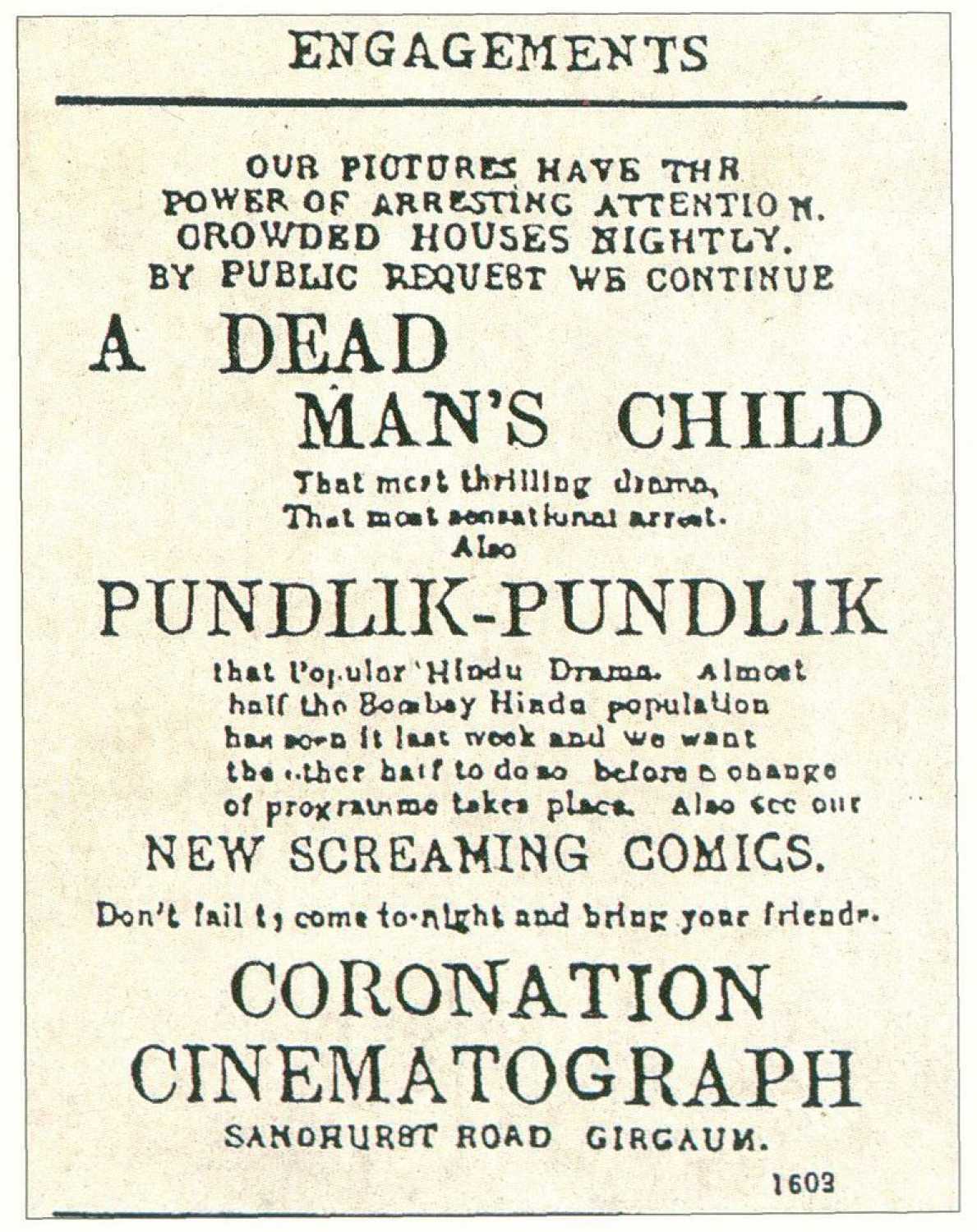For a century, Indian cinema has hailed Dadasaheb Phalke as the pioneer who created the first Indian feature film. Yet, there were a few nominees who might have made the cut before him.
Was Raja Harishchandra really India's first film?
Mumbai - 22 Jan 2016 11:41 IST
Updated : 12 Jun 2017 21:08 IST


Shriram Iyengar
In July 1896, the Lumiere brothers held an exhibition of their 'moving pictures' at Bombay's Watson's Hotel. Soon, travelling troupes around major cities of the country were featuring these miraculous pictures for the price of an admission ticket.
One such picture caught the eye of Dhundiraj Govind Phalke, a former painter, printing press owner, and cinema enthusiast, and he began work on his first film, Raja Harishchandra (1913), which gave birth to the Indian cinema industry.
But between the Lumiere screening and Phalke's iconic venture, there were other 'films' that have a fair claim for this piece of cinematic history.
Of the many who hold claim to being India's earliest filmmakers, two names stand out. Ramchandra Govind 'Dadasaheb' Torne and Harishchandra Bhatavdekar were among the foremost champions of this new medium.
Bhatavdekar, also known as Save Dada, shot and recorded a wrestling match at the Hanging Gardens in Bombay in 1896. This was the first instance of an Indian using the cinematic camera to record a live event. It is also the first example of any form of Indian documentary.
By the 1900s, cinema had become an exquisite experiment for photographers and artists in the country. Dadasaheb Torne was one of the many photographers enchanted by the ability to capture moving life. But it was the day he did it that set him apart from his contemporaries.
Innovating with a new style of storytelling, Torne imported raw film stock and a camera to record a live play. It was a retelling of a fable of the saint Pundalik. Performed by the Shripad Theatre Company and written by Ramrao Kirtikar, the fable spoke about rebirth. It is important to note that both Torne and Phalke turned to Indian epics and stories for their first films.
The camera was placed at a fixed position while the play was being performed at a playhouse in Grant Road, Bombay. It is this very fact that is often used to argue against Pundalik's position as the first Indian film.
Yet, Torne was dissatisfied with the recording of the play, and decided to shoot it again in parts and piece the story together. This remains one of the first instances of film editing in Indian history and provides a valid defence for the film's position as a directorial product.
The film was exhibited in 1912, a full year before Phalke released his Raja Harishchandra. The Times of India newspaper carried a full-page advertisement inviting audiences for the film.
One of the key arguments against Pundalik is that it was shot by Johnson, a British cameraman, and was the recording of a play, not a film per se. The fact that Torne also sent it to England for processing stands against its indigenous credentials.
For all its drawbacks, Pundalik was also among the earliest attempts of Indian storytelling using the medium of 'moving pictures'. That fact is not up for debate.


